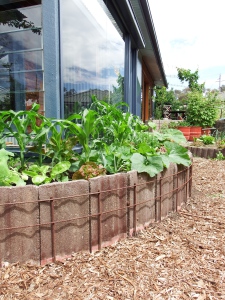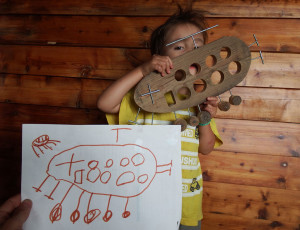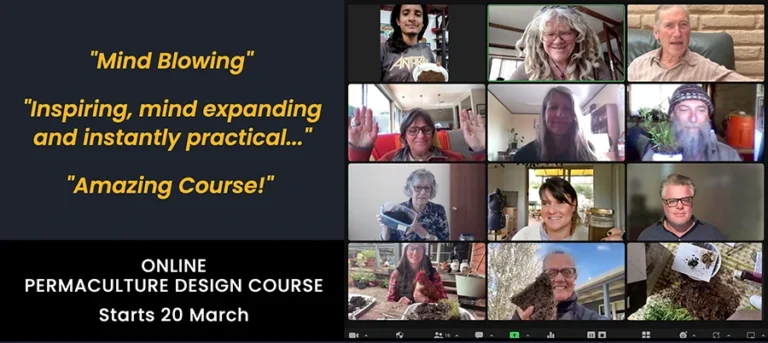 Principle 11: Use edges & value the marginal
Principle 11: Use edges & value the marginal
Do it Yourselfer #4
If Al Qaeda’s threat of disrupting oil imports comes to pass then we will see just how dependent our society has become on refined energy.
Australia now imports 90% of it’s oil from overseas, and nearly half of the national refineries have closed down in the last 10 years. Off-shoring these facilities means that stockpiles are reduced as is our ability to deal with fluctuations in supply.
Just-in-time delivery systems are responsible for our supermarkets holding about one weeks worth of stock. Without regular deliveries we are likely to see food run short on the shelves within a few days which may result in panic buying. Severe oil shortages will have severe consequences.
We are living in uncertain times, we need to learn to become more self-reliant and make the most of the resources that we have available to us.
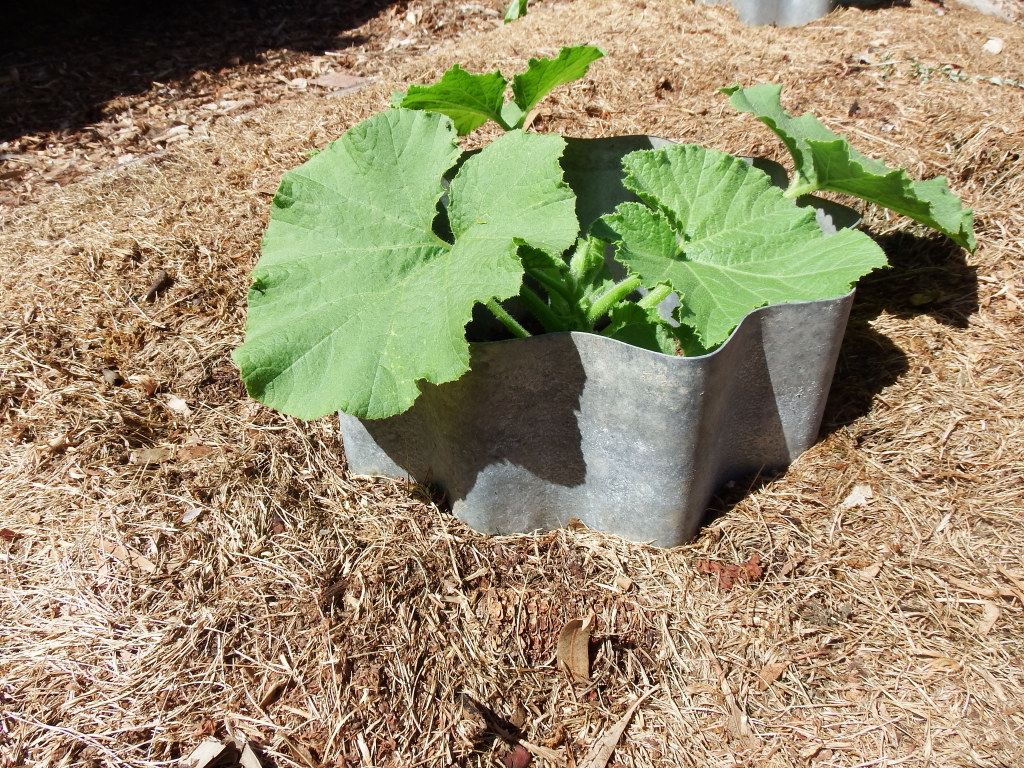
Living on the edge
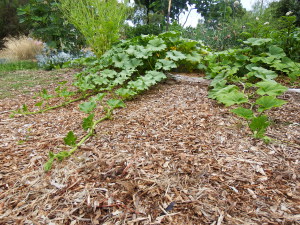
The permaculture principle of “use edges and value the marginal” is a valuable thinking tool for how to make more productive use of space and materials that are available closer to home.
Off-cuts of corrugated iron have been bent into a circle and fixed at it’s end to create a plant guard, an edge which has many useful functions.
I’ve planted a pumpkin in my front yard within the guard. The young seedling are offered some protection from the wind, scratching birds, attacks by slaters, snails and slugs. It also helps to reduce run-off when watering, directing water to the heart of the plant while also identifying the location as the vine grows out of control.
The area surrounding the guard has been mulched. I’ve used grass clippings mown from neighbouring properties that get dropped round every week or so. It’s a marginal resource that I’ve grown to value and offer seasonal vegies when abundant as an exchange.
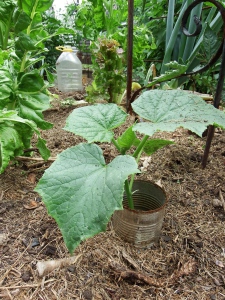
The mulch gives an insulative layer that keeps the soil cool and retains moisture, which is ideal during summer. It provides habitat for small insects that breaks the material down and provides nutrients that are more accessible for the plants. It’s likely that you’ll find worms happily munching the decomposing organic matter just below the surface.
Pumpkins are a great plants to get in the ground to make use of marginal spaces. Just provide a healthy dose of composted material where it’s planted and it will spread out five meters or more. But only if you can keep the water up to them over summer.
A good staple food that keeps well. We’ve still got one or two pumpkins left in our cellar from our bumper harvest last season.
You can use other materials to make guards too. Cutting the base of tin cans makes smaller guards that are ideal for starting off plants; like tomatoes, cucumber or basil. The larger tins are better, but the smaller ones work just fine.
The old style can openers can be used to remove the base, leaving a protected edge. If you don’t have success with that you can use an opener that cuts the whole base off, or even a hacksaw. The guard will have a sharper edge which requires some caution, but it slips into the soil easily. When finished, store guards away in a box for use in following seasons – they keep for years.
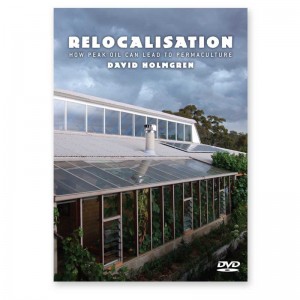 We can prepare as a community for the impacts of peak oil and climate change, by relocalising. Why not check out…
We can prepare as a community for the impacts of peak oil and climate change, by relocalising. Why not check out…
Relocalisation: How peak oil can lead to permaculture – DVD
In this presentation David Holmgren explains permaculture as a design system to relocalise our economies and communities in the face of the twin threats of Peak Oil and Climate Change. He shows examples of the diversity of permaculture design solutions from his own property Melliodora as well as the wider world of permaculture, demonstrating the scope and depth of permaculture design in the home, garden, farm, forest, community and ecomomy.


